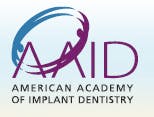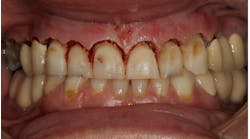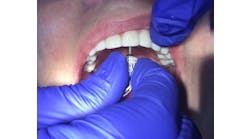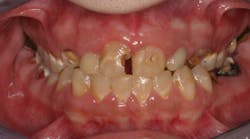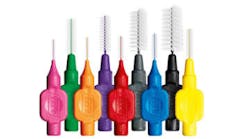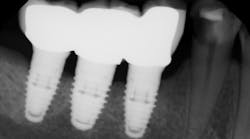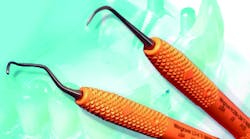Fluoride treatment of synthetic biomaterial assists dental bone regeneration
May 1, 2013
Journal of Oral Implantology — For a successful dental implant, a sufficient amount of jawbone is necessary. Deficient bone must be built up before the procedure. Guided bone regeneration is a common treatment, and biomaterials treated with fluoride are displaying cell proliferation that can improve this process. The Journal of Oral Implantology reports on a study of bioresorbable synthetic hydroxyapatite granules used as a bone supplement material. When these granules were exposed to a 4% sodium fluoride solution, cell proliferation was increased.RELATED |Stronger bone for oral surgery created by introducing microcracks in the jawboneRELATED |Established ridge-split procedure offers new application in dental implant surgery Bone regeneration techniques include the use of artificial materials such as hydroxyapatite and tricalcium phosphate. Implant products are being made with surface coatings or textures that have a biological effect on protein attachment and cell proliferation. When fluoride is added to this surface, it activates osteoblastic, or bone-making, cells and increases the rate of bone regeneration. In this study, hydroxyapatite granules were treated with a neutral 4% sodium fluoride solution. This led to the formation of a reactant resembling calcium fluoride on the surface of the granules. Immediate but slow release of fluoride came from the granules, and the concentration increased over time. Migration of human osteoblast-like MG-63 cells was confirmed when compared to a nonfluoridated control sample. Fluoride concentrations of 1.0 to 2.0 parts per million (ppm) showed this positive effect. When the concentration reached 5.0 ppm, however, the opposite effect was observed — the fluoride significantly inhibited cell proliferation. The authors conclude that the fluoride solution stimulates bone regeneration. The slow release of fluoride from hydroxyapatite granules facilitates osteogenesis, making this a beneficial method to supply fluoride and promote cell proliferation.Full text of the article, “Fluoride-Treated Bio-Resorbable Synthetic Hydroxyapatite Promotes Proliferation and Differentiation of Human Osteoblastic MG-63 Cells,” Journal of Oral Implantology, Vol. 39, No.1, 2013, is available here. The Journal of Oral Implantology is the official publication of the American Academy of Implant Dentistry and of the American Academy of Implant Prosthodontics. It is dedicated to providing valuable information to general dentists, oral surgeons, prosthodontists, periodontists, scientists, clinicians, laboratory owners and technicians, manufacturers, and educators. The JOI distinguishes itself as the first and oldest journal in the world devoted exclusively to implant dentistry. For more information about the journal or society, please visit their website.
